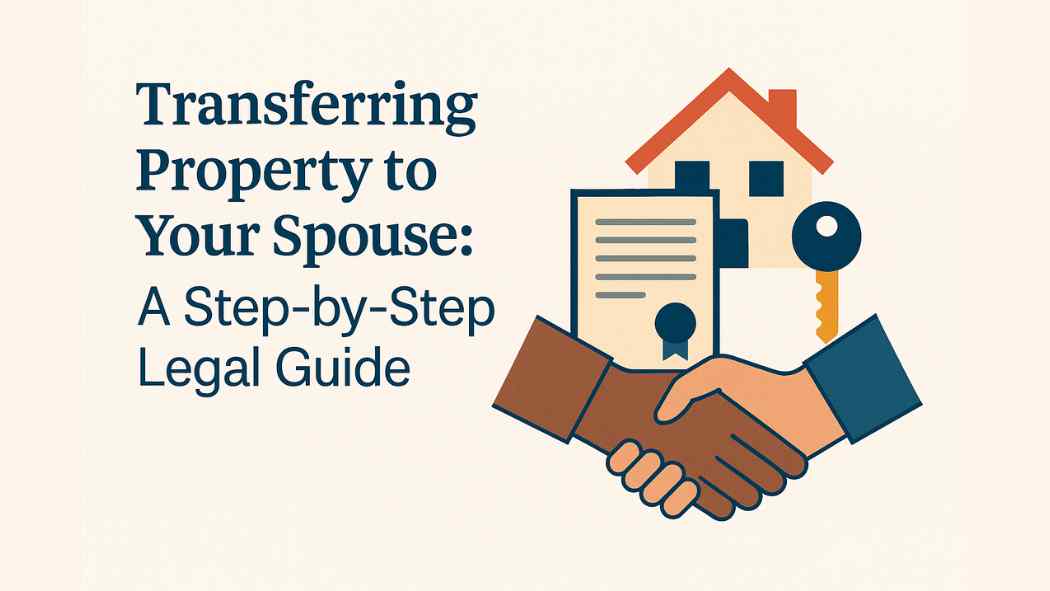Transferring Property to Your Spouse: A Step-by-Step Legal Guide

Sharing property ownership with your spouse can bring reassurance, fairness, and financial security. Whether you’re updating ownership after marriage, planning for the future, or managing tax efficiently, understanding the legal process helps you avoid mistakes.
A clear, guided approach ensures your transfer is handled correctly and without unnecessary stress. Keep reading to learn how to complete a property transfer to your spouse confidently and with peace of mind.
Understanding What the Transfer Involves
In the UK, transferring ownership between spouses is usually known as a transfer of equity. It happens when one partner adds or removes the other’s name from the title deeds while keeping some or all of the existing ownership. The process can be straightforward if no mortgage is involved, but it becomes more detailed when a lender’s approval is required.
It’s important to know that in some situations, Stamp Duty Land Tax (SDLT) may apply, especially if the transfer includes taking on part of a mortgage or financial consideration. Understanding these legal and tax details early prevents surprises and helps you plan properly.
How to Transfer Property to Spouse Step by Step
If you decide to transfer property to spouse, the first step is to confirm how you want to own the property together. You can hold it as joint tenants, where you both share it equally, or as tenants in common, where each of you owns a defined share. This decision affects how the property passes on if one of you dies, so it’s worth discussing carefully.
Your conveyancer will then prepare the TR1 form, the official Land Registry document that transfers ownership. Both parties must provide proof of identity, and if there’s a mortgage, your lender’s consent is essential. Lenders usually need to assess affordability to ensure the new arrangement is financially secure.
Once these details are confirmed, your conveyancer will handle the legal checks and submit the documents to the HM Land Registry. This process officially updates the ownership records and ensures your new arrangement is recognised in law.
Mortgage and Financial Considerations
If your property has a mortgage, your lender’s involvement is one of the most important steps. They’ll review whether your spouse can join the mortgage or take on the repayments, depending on the circumstances.
When no mortgage exists, the process is simpler, though it’s still important to formalise the transfer with a qualified conveyancer to ensure all documents are accurate. Stamp Duty Land Tax may also apply if any financial consideration or part of a mortgage is being transferred.
Protecting Each Spouse’s Interests
A property transfer between spouses usually happens with complete trust, but it’s still wise to make everything legally clear. Many couples choose to create a Deed of Trust, which sets out how the property is shared and what happens if it’s sold or remortgaged. This adds protection for both of you and prevents misunderstandings in the future.
It’s also a good idea to keep written records of any financial contributions made during the ownership change. Having these details on file makes future property transactions, like remortgaging or selling, far smoother.
Finalising the Transfer
Once your conveyancer has all the required approvals and documents, they’ll register the transfer with the Land Registry. You’ll pay a small registration fee, which varies depending on the property’s value and whether the application is made online or by post.
After registration, it’s important to check that the title deeds reflect both names accurately. This confirms that the ownership transfer is complete and fully recognised in law. Once confirmed, you can feel confident that your property now legally belongs to you both.
Building Security for the Future
Transferring a property to your spouse is more than just a legal process because it represents shared trust and commitment. With clear communication, professional support, and proper documentation, the process can be straightforward and reassuring.
Taking these steps ensures your home truly reflects your partnership and protects both of your interests for years to come. By completing the process carefully, you can enjoy lasting peace of mind knowing your property ownership is secure and your future together is well protected.



